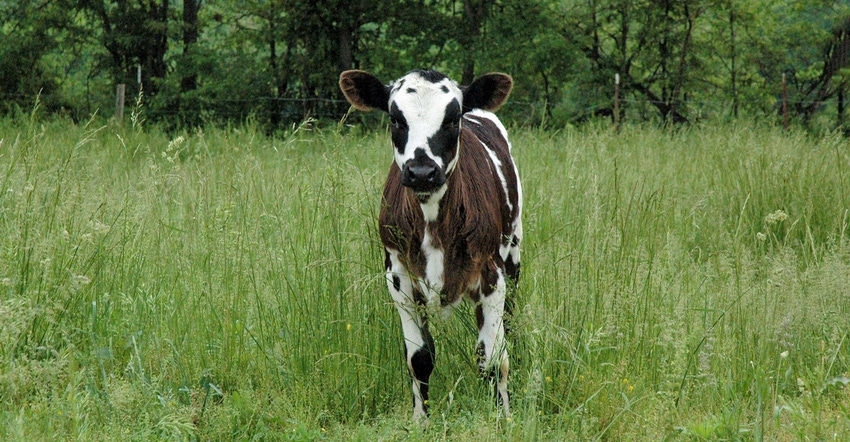
Annual lespedeza is a good forage for grazing during the summer months. Craig Roberts, University of Missouri Extension forage specialist, says winter is the time to seed light stands.
Livestock can graze lespedeza in pastures in Missouri from June through September, he says. But if these fields were overgrazed in the fall, they need to be replenished.
Selecting lespedeza seed
There are two main types of lespedeza grown in Missouri — Korean and Kobe.
Roberts says that Korean lespedeza was introduced into the U.S. from Korea in 1919 and into Missouri in 1921. At that time, he says, the Missouri Agricultural Experiment Station received a spoonful of seed from USDA.
“After five years of intensive study at MU, the experiment station sent 5-pound packages of seed to 30 farmers for on-the-farm tests,” Roberts notes. “All the farmers sent back encouraging reports. Acceptance of the crop was outstanding, and planted acreage in Missouri peaked at about 6 million acres in the early 1950s.”
When five different seed dealers in Missouri were asked what lespedeza seed was available, they all responded, “Korean.” Roberts says not so fast.
“The reason that's in quotes, instead of just formatted like a typical variety name, is because the seed is probably not Korean,” he says. “It says on the bag Korean lespedeza VNS, which means variety not stated. It is probably just a mix of Korean and Kobe.”
Kobe was introduced from Japan in 1919. Kobe grows much larger than common lespedeza, is more erect and produces more hay or pasture, Roberts says.
Prices of seed differ considerably between dealers. Roberts found seed selling from as low as $1.12 per pound, up to $2.20.
Farmers also should ask if the seed is dehulled. “Dehulling will remove only about 10% of the weight,” Roberts says. “It's a very light chaff seed coat. So, it can affect the seeding rate.”
Planting scenarios for lespedeza
If farmers are going to plant annual lespedeza, the recommended rate is 20 pounds of “pure live seed per acre.” “That also is in quotes because nobody does it,” Roberts says. “I wouldn't do it.”
The best way to get a good stand of annual lespedeza is to plant about 6 or 7 pounds, and make sure that it reseeds that first year, he explains. Instead of planting 20 pounds, and if careful with reseeding, farmers could easily see anywhere from 30 to 50 pounds of pure live seed drop just from that first stand. “So, we'll get all the lespedeza we want just by being patient,” Roberts adds.
Lespedeza seed can be broadcast, Roberts says, typically in late January when the ground is frozen. The seed will work its way down into the soil through the natural freezing and thawing process.
“We're not so worried about lespedeza breaking dormancy when we have a warm spell in the winter, breaking dormancy and then dying because of a late freeze,” he explains. “We don't worry about that. It usually germinates in late April, or early May.”
However, it is important to make sure the seed has contact with the soil. “We've seen cases where people broadcast in the winter frost seeding, and they don't have a stand and then come back and look at the field and there's so much thatch that the seed never touched the soil," Roberts says. He says if farmers are grazing the field, it also can be hoofed in as well.
Farmers also can drill or broadcast the seed and harrow it in the spring — late March or early April.
Roberts says the most common frost seeding recommendation for pastures in Missouri is 5 or 6 pounds of red clover, a half-pound to a pound of white clover, and 6 to 7 pounds of annual lespedeza.
About the Author(s)
You May Also Like






